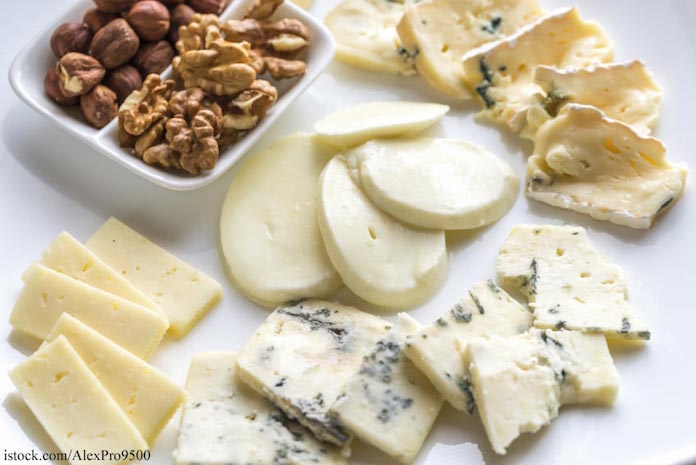Given the two mystery Listeria monocytogenes outbreaks the government is currently investigating, it is a good idea to know what foods are commonly associated with Listeria monocytogenes outbreaks? This deadly infection has severe consequences; many people who contract it require hospitalization. If you are at higher risk for complications from this infection, you should think about avoiding these foods.

Those who are at higher risk include the elderly, the very young, anyone with a chronic illness such as diabetes, anyone with a compromised immune system, and pregnant women. Most people who are sickened with this infection are older, have a chronic illness, or are pregnant; 90% of patients fall into those categories. Others who contract this infection rarely become seriously ill.
And because the symptoms of listeriosis, the illness caused by this pathogen, can take up to 70 days to appear, it can be difficult to pinpoint the food that made someone sick. This is especially true given that many people think the last thing they ate was what made them sick.
Foods Commonly Associated with Listeria Outbreaks
While Listeria monocytogenes outbreaks have been linked to many different types of foods, including melons, enoki mushrooms, caramel apples, ice cream, packaged salads (in 2021, Dole and Fresh Express), and even precooked chicken, certain foods are considered more risky. Experts say that anyone who is at higher risk for complications from listeriosis should avoid these foods.
Queso Fresco and Other Soft Cheeses
Queso fresco and other soft cheese, when made with unpasteurized or raw milk, may be 50 to 160 times more likely to cause listeriosis than when they are made with pasteurized milk. And these products can be contaminated after they are made, especially if they are Hispanic-style cheeses. Other problematic cheese varieties include Camembert, Brie, queso blanco, panela, feta, and blue-veined cheeses.
Melons
Since the huge and deadly Listeria monocytogenes outbreak linked to melons from Jensen Farms, this fruit has been on the list for high risk individuals to avoid. (You can take a look at how I prepare melons, although this method is not a guarantee that all pathogens on the fruit will be destroyed.)
If you buy cut cantaloupe or other melons, keep it in the refrigerator, and store it no longer than a week. When you prepare melon, scrub the rind under running water before you cut it. Eat cut melon right away or refrigerate it. And discard cut melons left at room temperature longer than four hours.
Raw Sprouts
The conditions under which raw sprouts are grown are ideal for bacterial growth. The warm, moist, and humid conditions are perfect for Listeria monocytogenes bacteria, Salmonella, and E. coli.
Anyone at higher risk for those infections should not eat raw or lightly cooked sprouts of any kind, including mung bean, radish, alfalfa, and clover. Ask that raw sprouts not be added to your food when eating out. And if you buy a premade sandwich, make sure it doesn’t contain raw sprouts.
Hot Dogs, Luncheon Meats, Deli Meats, and Cold Cuts
These items should be heated to an internal temperature of 160°F before consuming. Deli meats can be problematic because of the slicing machines, which are difficult to clean and can harbor Listeria that may be resistant to classic cleaning methods.
The commercially packaged products should be stored no longer than two weeks in the fridge, while meats from the deli should only be stored three to five days in the refrigerator. Don’t even let juices from hot dog and lunch meat packages get on other foods, utensils, and surfaces in your kitchen.
Do not eat refrigerated pate or meat spreads from a deli or meat counter or from the refrigerated section of the store. Meat spreads and pates that do not require refrigeration are a safer choice.
Raw Milk
Raw milk is inherently unsafe since it is not heated to kill pathogens that may get into the milk from the cow’s anus, which is located close to the udder. In fact, the CDC says that “raw milk is one of the riskiest of all” food products.
Raw milk that is made into soft cheese, ice cream, and yogurt can also cause serious illness. And keep all milk and milk products, even pasteurized products, refrigerated at 40°F or colder.
Smoked Fish
Smoked fish, unless it is canned or shelf stable, or is cooked in a recipe, is risky to eat. Eating canned and shelf-stable tuna, salmon, and other fish products is not risky. Cold smoked fish that can be unsafe include salmon, trout, cod, whitefish, tuna, and mackerel. Those items are usually called “nova-style,” “lox,” “kippered,” “smoked,” or “jerky.”
Symptoms of Listeriosis
What are the symptoms of listeriosis? They include a high fever, severe headache, stiff neck, and muscle aches, that may be preceded by abdominal cramps, abdominal pain, nausea, and diarrhea. In pregnant women, the illness often manifests as a mild case of the flu, with muscle aches, nausea, headache, vomiting, and fever. Complications for pregnant women include stillbirth, miscarriage, premature labor, and infection of the newborn.
Now that you know which foods are commonly associated with Listeria monocytogenes outbreaks, you can protect yourself. But since those foods aren’t the sole causes of these illnesses, keep up to date on FDA and USDA recalls and CDC outbreak announcements. And when you know the symptoms of listeriosis, you can get help early, which may lead to a better outcome.




